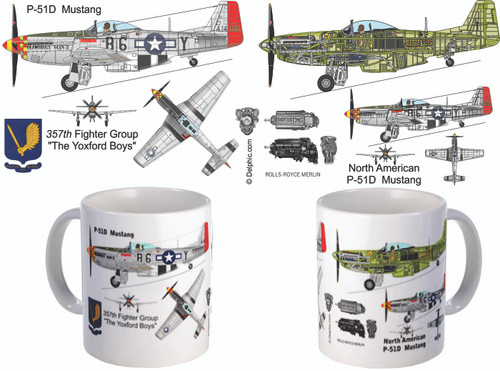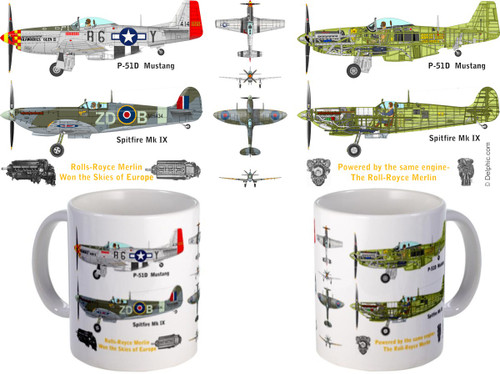Product Description
The P-51 of William Bradford Bailey who was born in Lynn, Massachusetts on August 20,1918 as WW1 was winding down. Bill graduated from Duke University in 1940, and earned his Private Pilots License under a program sponsored by the Civil Aeronautics Administration. He was selected for advanced training in a PT-17.In September of 1940 Bill reached an important fork in his future career road. Instead of attending Harvard Business School he chose Army Flight Training instead, graduating with Class 41-E at Maxwell Field in Alabama. His first assignment was at Mitchel Field in New York flying P-40s with the 58th Pursuit Squadron. With America's entry into WW II the Army Air Corps grew rapidly and Bill received numerous assignments of increasing responsibility. This culminated with his posting as C.O. of the 352nd FS equipped with P-40s.
The squadron was deemed combat-ready in August 1943 following 6-months of training with the P-47 Jug. Assigned to the 8th Air Force in East Anglia, UK, Col. Bailey lead the 352nd in conducting its primary mission of bomber-escort and ground attack. In July of 1944 Bailey assumed the post of Executive Officer and Deputy Commander of the 353rd Fighter Group. The Group converted to the P51 Mustang in September, and Bailey continued in that capacity until September of 1945. In his two combat tours Bill Bailey flew 186 combat missions totaling 454 hours. He flew 32 missions and 129 hours in the P-51. He was credited with 3 enemy aircraft destroyed in aerial combat and an additional 3 destroyed on the ground. Like most military pilots in WW II, Col. Bailey was a team player who was more conservative in his flying than some other fighter pilots who were more focused on attaining personal fame or glory. On March 2, 1945 Bailey led a group of fifty-two P-51s in support of a major bombing mission of a refinery in the Eastern Ruhr. Shortly after joining up with the bombers, Bailey noticed a large group of German fighters to the East. With the sun at their back, the P-51s gained altitude and attacked the German fighters from behind as they prepared to turn into the bomber formation. The Germans were caught by surprise and fifteen Jerrys were downed. In the melee that followed Bailey lost contact with his wingman and followed a group of about six Fw-190s diving for cover in the overcast below. Bailey caught up with them as he ducked in and out of clouds at 12,000 feet. He caught two of them with a concentrated burst at about 50 yards from their tails. Low on fuel and facing a 400-mile return trip, Bailey broke off the attack and returned to England. Following WWII, Bailey accepted a regular commission in the Air Force and was sent to Columbia University Graduate School of International Affairs. After graduation, his successive assignments included Assistant Air Attache, U.S. Embassy, Paris, and Director for Arms Control, Disarmament and United Nations Affairs in the Office of the Secretary of Defense, Air Advisor to the U.S. Ambassador to NATO, student at the National War College, Office of the Chief of Staff, USAF, and Air Attache, US Embassy, Paris. Following his retirement from the Air Force he became Director of European Operations for Rohr Industries, the leading manufacturer of nacelles and thrust reversers for transport aircraft including the European Airbus. Col. Bailey's decorations include the Silver Star, The Distinguished Flying Cross with 3 Oak Leaf Clusters, the Air Medal with 6 Oak Leaf Clusters, the French Legion of Honor, and the Swedish Royal Order of the Sword.







